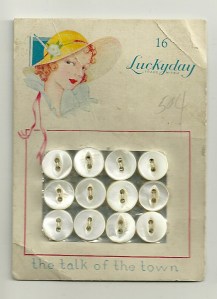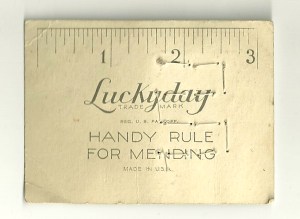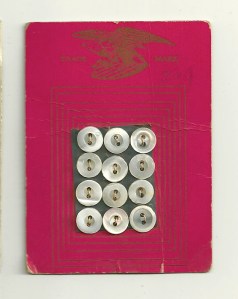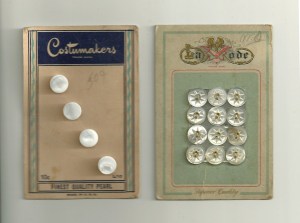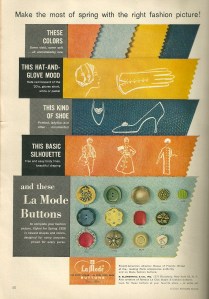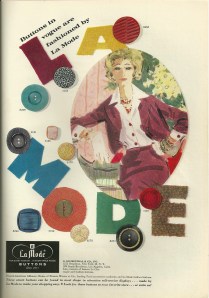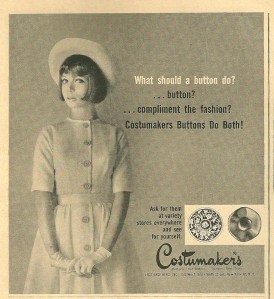Red Letter Day: “A day that is pleasantly noteworthy or memorable.” (Cambridge Languages)
Day Dress: “The perfect all-in-one outfit, a day dress is a versatile and fashionable way to look chic and stay comfortable at the same time.”
Any day I finish a lengthy project (successfully) is definitely a “red letter day.” This dress just happens to be red, adorned with letters, and “back in the day,” as they say, it would have been considered a “day-dress,” although the apt description above is actually from a current website. (DavidJones.com)
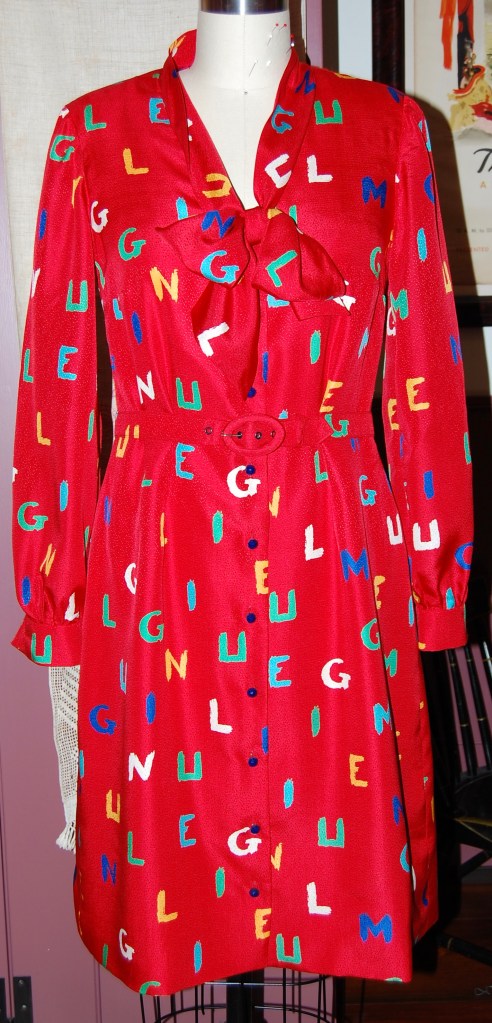

I go into a little bit of how this dress evolved in my last post. But of course there were many more decisions to be made along the way. I had to decide:
- Do I underline this crepe de chine?
- If I underline it, what do I use for my underlining fabric?
- Do I also line this dress?
- If I line it, do I also line the sleeves?
- The blouse pattern has floating, released darts at the waist. Do I use that technique for this pattern transformed into a dress?
- What color and type of buttons will most enhance the fabric?
- Do I make bound buttonholes or machine-stitched ones?
So, let’s start at the beginning. Because this was a very soft, fluid, lightweight crepe de chine, I thought it best to underline it. My normal go-to for underlining – silk organza – would have reduced the fluidity of the silk, so I ruled that out. Cotton batiste just did not seem the way to go. When I found a silk batiste on the website for Farmhouse Fabrics, I knew I had my solution.

However, even with the ethereal nature of the silk batiste, I decided not to underline (or line) the sleeves. I wanted them to retain their uninhibited flow.

Once I had the underlining basted to the fashion fabric, I weighed whether or not to line the body of the dress. I went with my gut feeling about this and decided to line it with a soft and lightweight red silk crepe de chine – almost a perfect match in color, as is evident in the above picture – which I purchased from Emma One Sock Fabrics.
In doing so, I eliminated the front and neck facings which were replaced with the solid red lining.

I had worked out the floating dart question in my muslin/toile and decided to use them for the dress. This left above the waist “blousy” and made it more fitted below the waist.


Buttons are always one of my favorite parts of a project. I simply love looking for buttons – and I really love finding the perfect ones. In this case, I knew I needed a large quantity – at least 10, depending on the size I found. I did not think red buttons would do anything to enhance the dress, and I thought white pearl buttons would be too much of a contrast. But then I found these buttons on eBay:
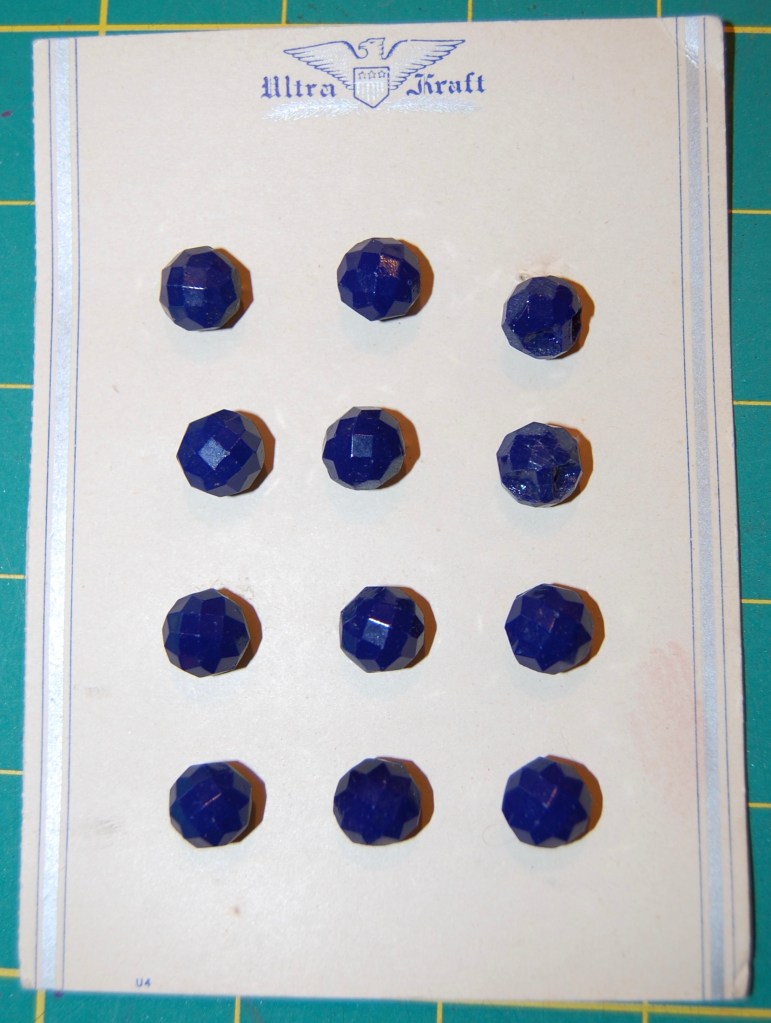
They are probably from the 1940s, cut glass, made in Czechoslovakia. The card held 12 buttons, a good quantity for my purpose. I think of these buttons as “small, but mighty.” They provide the right contrast, and the faceted surface picks up the shimmer from the slight jacquard weave in the fabric. I think they are perfect!
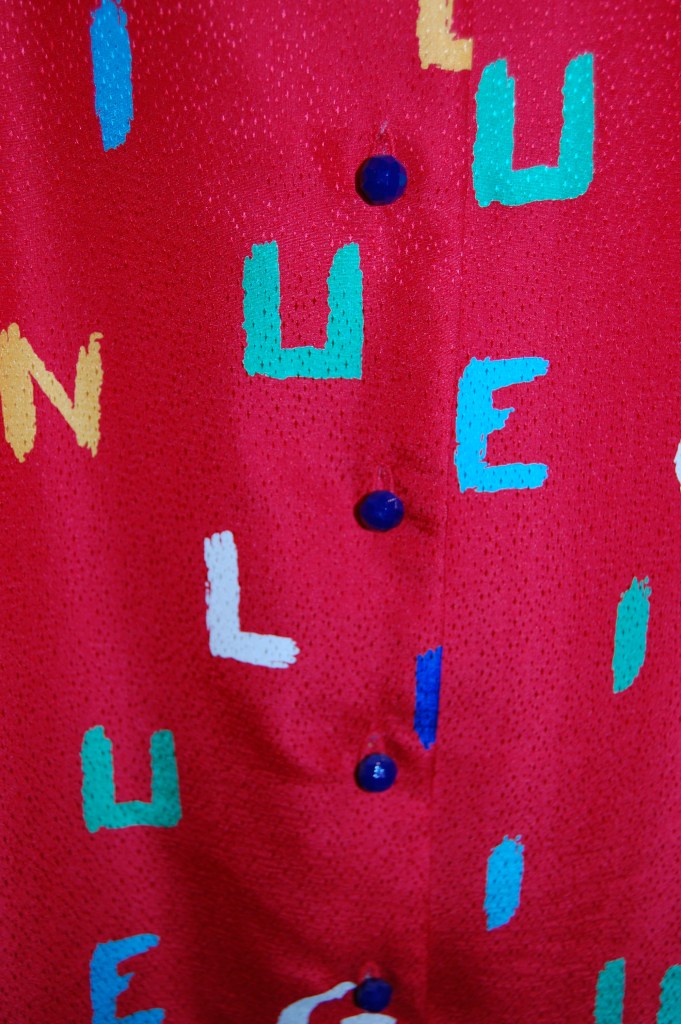
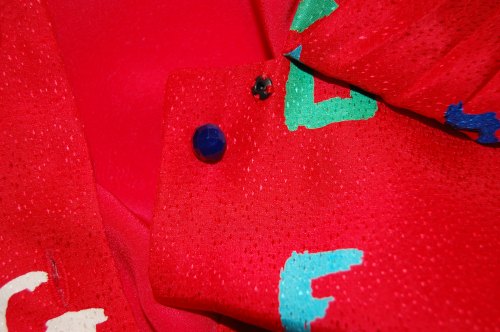
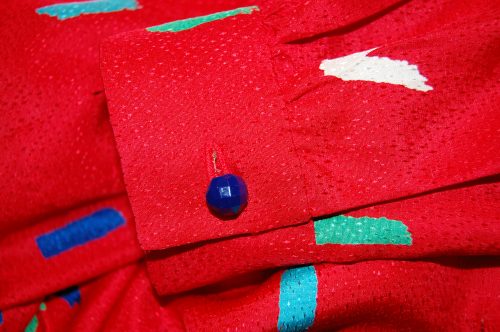

And finally, bound or machine-made buttonholes? I did a sample of each. I have recently started using my automatic buttonholer for my 1951 Singer Featherweight, and I must say, it is an engineering marvel. It makes such amazing, precise buttonholes. And although I do love bound buttonholes, I decided in this instance I would be happier with machine-made ones.
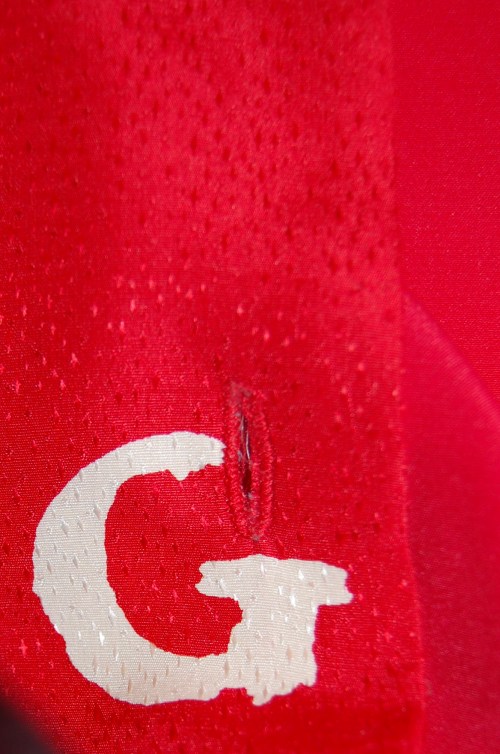

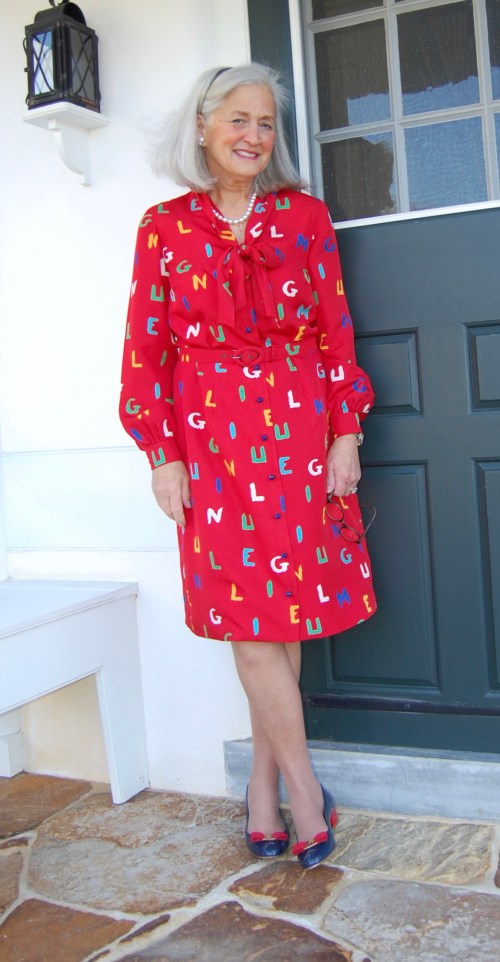
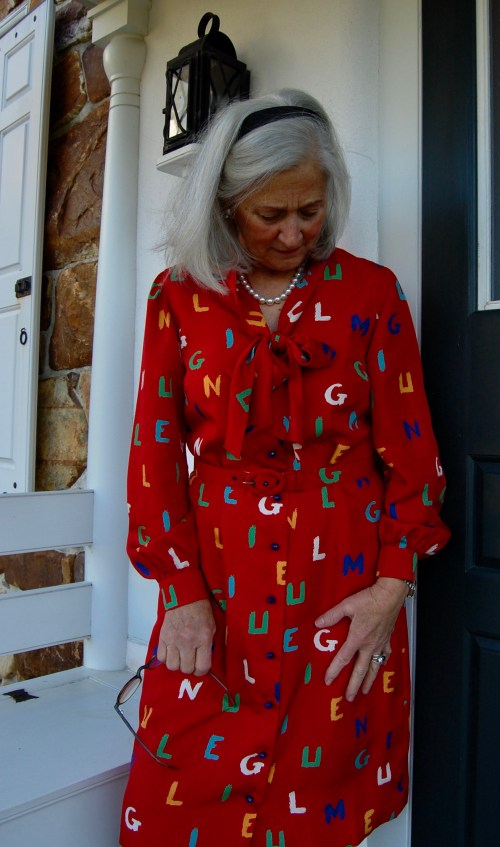
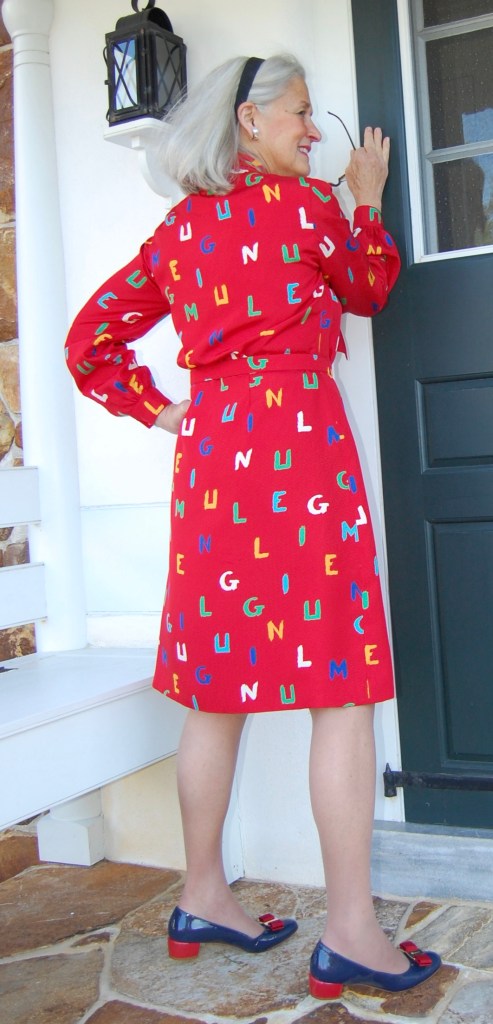

So that about sums it up. I had just barely enough fabric to eke out this dress (which seems to be a theme with me!), so I think it was meant to be. Here’s to Red Letter Days – and the dresses which make them happy.

